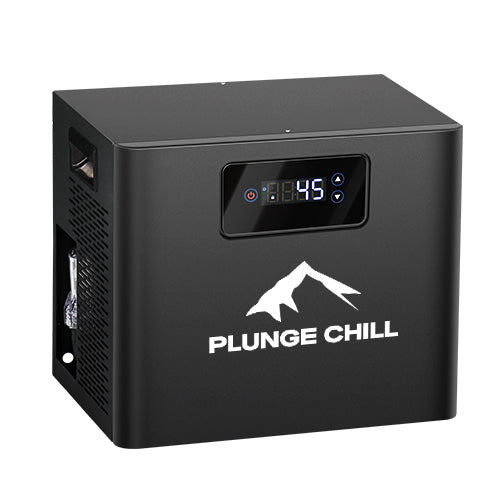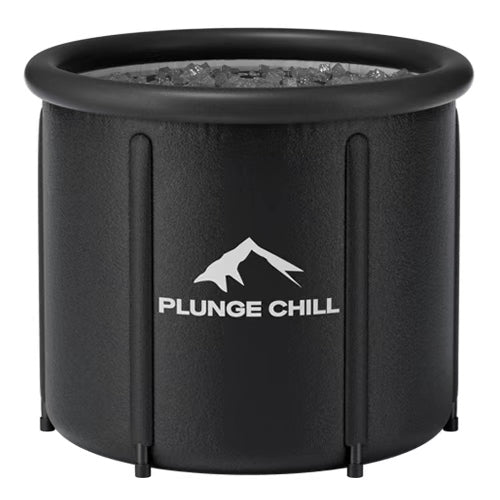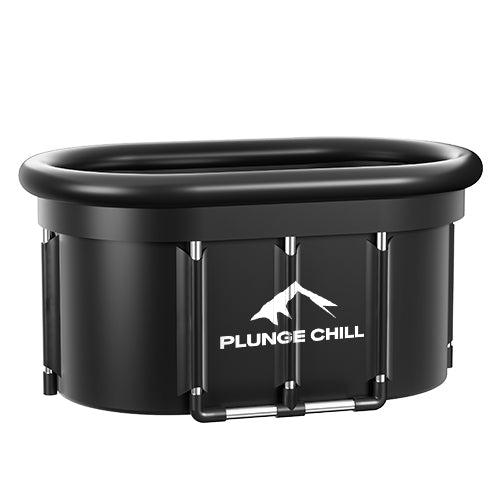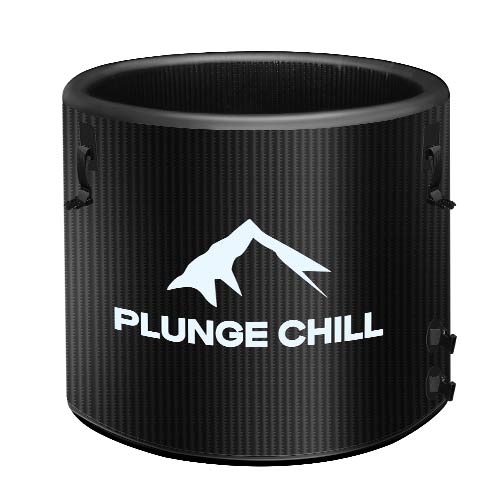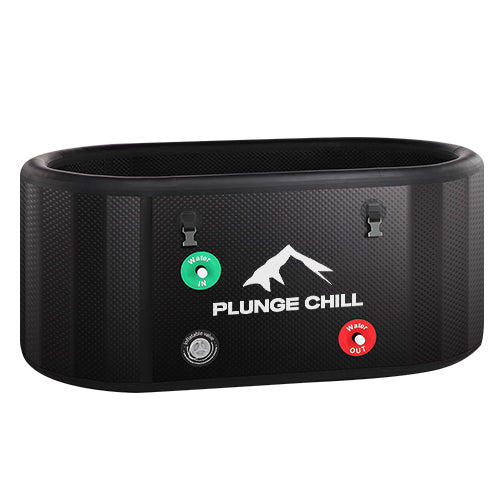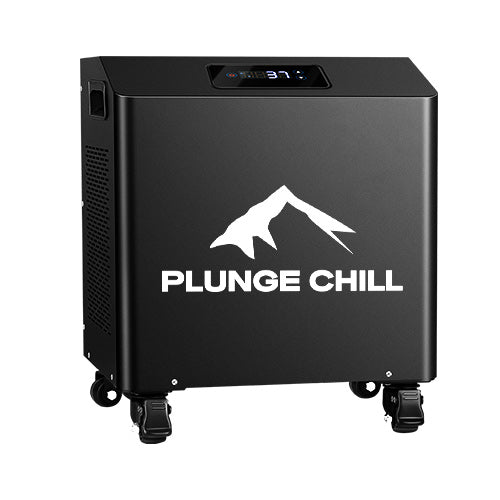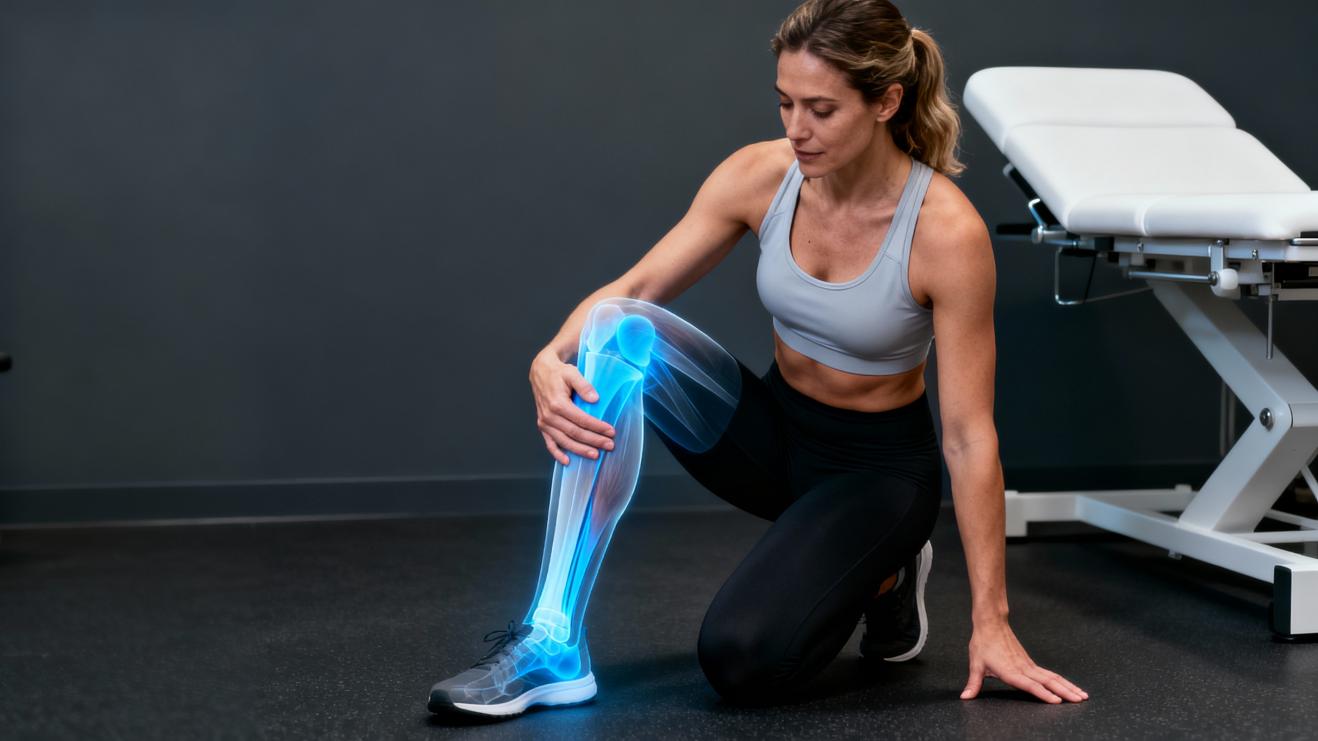As a sports rehabilitation specialist, strength coach, and cold plunge product reviewer, I work at the intersection of physiology, programming, and practical recovery tools. Athletes and active people often ask the same core questions after hard sessions or injuries: What exactly is this pain? How does the inflammatory response help or hurt? When should I use heat, cold, or a cold plunge? And when is imaging or immobilization justified? This article translates current evidence into clear, real‑world guidance, with direct references to Cleveland Clinic, Harvard Health, UCSF Magazine, RSNA Radiographics, PubMed Central reviews, UC Davis College of Biological Sciences, Academy Orthopedics, NHS Inform, and others.
The Biology: What Happens When Muscle Is Injured
Muscle healing is not linear. It unfolds through overlapping phases that start with controlled destruction and end with remodeling of tissues that must once again accept force. Reviews in PubMed Central describe an early degeneration–inflammation phase marked by necrosis and hematoma, followed by satellite cell activation, myoblast formation, and early revascularization that begins around day three. The regeneration phase accelerates roughly from days four to 14, then gradually declines by weeks three to four as fibers mature and attach into new myotendinous junctions across a thin connective tissue layer. Remodeling continues for weeks to months as scar collagen evolves from less organized to more aligned, tensile structures, a progression RSNA Radiographics correlates with changing MRI appearances.
The immune system guides and times this process. Neutrophils and M1 macrophages arrive first to clear debris and stimulate myoblast proliferation; around days two to four, the balance shifts toward M2 macrophages that are more pro‑myogenic and anti‑inflammatory. Clinically, that transition is why total suppression of inflammation immediately after injury is not ideal. As a rule of thumb, the early response is protective and instructive; our goal is to shape it, not silence it entirely.

DOMS, Strain, and Tendinopathy: Similar Discomfort, Different Decisions
Not every post‑exercise ache is an injury. DOMS—delayed onset muscle soreness—is a self‑limited response to unaccustomed or eccentric work. PubMed Central notes onset typically begins one to two days after activity, peaks around days two to three, and resolves by days five to seven; muscle strength dips transiently, creatine kinase may rise modestly, and there is little to no frank necrosis. NHS Inform similarly advises that DOMS settles within two to five days without medical care.
Strains are different. Cleveland Clinic and Harvard Health define a strain as overstretching or tearing of muscle or tendon fibers. Grades range from mild microtears with soreness and preserved strength, through partial tears with weakness and ecchymosis, to full‑thickness ruptures that may present with a palpable defect, “pop,” and loss of function. These require risk‑stratified care and judicious progression back to loading. Tendinopathy is different again: a load‑management problem with pain localized to a tendon that often benefits from carefully dosed isometrics and slow‑progressive heavy loading rather than rest alone, as echoed in UCSF Magazine’s guidance that some low‑level pain in tendinopathy can drive healthy remodeling.
A pragmatic way to decide what you’re dealing with is to track onset and pattern. Diffuse soreness that worsens with stretch at day two and eases by day five is often DOMS. Focal pain with sharp onset, weakness, or a visible bruise suggests a strain, particularly around the myotendinous junction. Gradual onset pain at tendon insertions that warms up with activity points toward tendinopathy. If in doubt, clinicians can confirm severity with exam and, when needed, ultrasound or MRI per RSNA Radiographics, particularly for deep, complex, or high‑risk sites.

Heat, Cold, and Cold Plunge: Matching Modality to Biology
Cold and heat are both useful—if you match them to the problem and timing. A pragmatic study summary from an orthopedic provider suggests that after a bout of squats in young adults, immediate heat improved early strength and appeared superior for immediate muscle damage measures, while cold provided better pain relief at both immediate and 24‑hour marks; pain relief favored cold at both time points. For general post‑exercise soreness in otherwise healthy tissue, those patterns are sensible: heat can relax stiffness right away; cold can blunt pain later the same day and the next.
However, for an acute strain with visible swelling or bruising, Cleveland Clinic and many sports‑medicine references still favor early cold alongside protection, compression, and elevation, and caution against heat during the first 48 hours if swelling is significant. At first glance this conflicts with the immediate‑heat approach above, but the contexts differ. The heat‑vs‑cold comparison was a DOMS‑dominant scenario without acute tissue disruption or hematoma; the no‑heat caution targets genuine injury with vascular leakage. When you separate soreness from structural injury, the guidance is coherent.
Cold plunges are simply cold therapy delivered systemically. In my facility work, I position them as a pain‑modulation and recovery‑comfort tool, particularly from 6 to 48 hours after DOMS‑heavy sessions or after controlled return‑to‑run exposures where the goal is to contain soreness, not to stimulate maximal adaptation. For acute strains, I prefer local cold plus compression in the early window, then re‑introduce whole‑body immersion once swelling is down and isometrics have begun.
Overlooked insight integrated here: the heat‑first, cold‑later sequence that helps soreness does not universally apply to acute strains with swelling; in true strains, initial cold still carries weight. The likely reason is definition and sample differences—DOMS protocols in healthy subjects versus injury management in patients—and timing differences across the first 48 hours. Sources include Carrell Clinic, Cleveland Clinic, and NHS Inform.
When to Move Again: Immobilize Briefly, Then Load with Discipline
Contrary to the old advice of prolonged rest, early movement is generally better—after a short protective window proportional to the injury. A PubMed Central review of muscle regeneration biology supports brief immobilization after shearing injuries—about four to six days, kept under a week—to allow early scar to gain minimal tensile strength, followed by graded mobilization to avoid rerupture and excessive scarring. A clinical review in PubMed emphasizes immediate first aid, reassessment at days five to seven, and progression to controlled activity within pain limits, noting that agility and trunk stabilization outperform programs that focus only on stretching and single‑muscle strengthening.
In the clinic and weight room, that translates to a sequence of pain‑free isometrics, short‑range isotonic work, then progressive range and load, while layering in proprioception and trunk control as soon as tolerable. UCSF Magazine adds a helpful green–yellow–red framing for pain: tolerable discomfort that decreases with movement is often acceptable; sharp, worsening pain, numbness, or tingling is not. My practice uses this as a running conversation during sessions to calibrate dosage rep by rep.

Tendons and Isometrics: Why Short, Static Work Packs a Punch
Tendons and ligaments adapt differently than muscle. Work from UC Davis College of Biological Sciences reports that static holds—planks, wall sits, or joint‑angle‑specific isometrics—held for 10 to 30 seconds can stimulate connective tissue remodeling meaningfully, and that two brief sessions per day may outperform a single longer block for tendon health. The same group also showed that bones, tendons, ligaments, and cartilage stop receiving “get stronger” signals after only five to ten minutes of loading, after which additional repetitions add wear without further adaptation signal. For athletes returning from tendinopathy or ligament injury, I treat isometric holds and “micro‑dosed” bouts across the day as a high‑yield, low‑irritation way to accumulate stimulus without provoking flare‑ups.
Overlooked insight integrated here: many strength plans chase long time‑under‑tension sets when connective tissue may only need five to ten minutes of targeted signal per session. For tendons, short static holds at meaningful joint angles, repeated across the day, can calm pain and improve load tolerance. Source is UC Davis College of Biological Sciences.
Imaging and Risk Flags: When MRI Matters
Most strains do not need MRI. Clinical course and function are enough to guide early care. RSNA Radiographics recommends imaging for deep or complex injuries, or when return‑to‑play decisions carry high consequences. Prognostically, central tendon disruption, proximal free tendon involvement, and persistent gaps predict longer return‑to‑play times than low‑grade muscle‑only injuries. Follow‑up imaging at about 15 days can help distinguish normal remodeling from warning patterns such as persistent feathery edema or a non‑closing gap. In practice, I use MRI strategically to refine timeframes for high‑level athletes and to de‑risk reinjury when symptoms or function lag.

Practical Field Guidance: Putting It All Together
For DOMS after novel or eccentric‑heavy work, expect discomfort to peak by day two or three and fade by day five to seven. Light movement and gentle stretching are acceptable if pain eases during the session. Heat in the first hours can help stiffness; cold later that day and the next is a reliable pain reliever, and a cold plunge in the 6–48‑hour window can make recovery more tolerable. Sources include NHS Inform and provider summaries of controlled protocols.
For suspected strains with focal pain, swelling, or weakness, start with protection, relative rest, compression, elevation, and cold. Avoid aggressive stretching or heat if swelling is significant in the first 48 hours, as Cleveland Clinic notes. Reassess at days five to seven per PubMed recommendations; if pain is local, strength is recovering, and range is opening, begin isometrics and graded loading. If you felt a pop, cannot bear weight, notice a dent, or symptoms worsen, escalate care; Harvard Health emphasizes that these are red flags that may require immobilization or surgical consideration in grade III injuries.
For tendinopathy, shift the focus to pain‑calming isometrics and slow progressive heavy loading. UCSF Magazine points out that some pain during tendon rehab can be acceptable, provided it remains in the green–yellow zone and settles after sessions. A structured plan that balances joint angle, tempo, and volume will outperform ad hoc rest.
For return to sport, favor progression that integrates trunk control and agility rather than only local muscle strengthening, per PubMed clinical guidance. Boost Physical Therapy’s approach to proprioception and functional training aligns with the evidence that re‑injury risk falls when joint control and task‑specific skills are retrained.
Evidence Checkpoints and Disagreements, Explained Briefly
There is a genuine tension between “early heat” recommendations and “avoid heat initially” admonitions. The most likely reason is differing populations and targets: heat‑first comes from soreness protocols in healthy subjects; avoid‑heat applies to swollen, vascular injuries. Methodology and timeframe also differ. Align your choice with the tissue state you see, not with a one‑size‑fits‑all rule. Sources include Carrell Clinic, Cleveland Clinic, and NHS Inform.
Another point of divergence involves how long to immobilize. Regeneration biology in PubMed Central supports brief immobilization after shearing injuries to protect nascent scar, while broader clinical reviews emphasize moving within days. The reconciliation is practical: immobilize just long enough for a minimal scaffold, then move early to minimize fibrosis. Differences in injury severity, affected muscle, and whether the data are animal or human also explain the gap.
A forward‑leaning inference worth testing in practice is whether immediate post‑lift cold plunges might slightly blunt hypertrophy signaling in advanced trainees while improving soreness and sleep. Suggested verification step: run a four‑to‑six‑week within‑athlete comparison using matched leg days, measuring session RPE, sleep quality, next‑day performance, and mid‑thigh circumference/ultrasound thickness to detect any meaningful difference.

Tables: Quick Reference for Clinicians and Athletes
|
Condition |
Typical Onset After Activity |
Pain Pattern |
Objective Signs |
Early Self‑Care Focus |
Sources |
|
DOMS |
24–72 hours, resolves 2–7 days |
Diffuse, worsens with stretch, eases across week |
Minimal swelling, transient strength drop |
Light movement, gentle stretch; heat early for stiffness; cold later for pain relief |
PubMed Central; NHS Inform; Harvard Health |
|
Acute strain |
Immediate or early hours |
Focal, sharp with loading; weakness common |
Swelling, bruising, possible palpable defect |
Protection, relative rest, compression, elevation, cold; avoid aggressive stretch/heat if swollen |
Cleveland Clinic; Harvard Health |
|
Tendinopathy |
Gradual, load‑linked |
Local tendon pain; warms up with activity |
Tenderness at tendon; stiffness after rest |
Isometrics, progressive heavy slow load; manage volume and technique |
UCSF Magazine; UC Davis (isometrics rationale) |
|
Use Case |
Primary Goal |
Timing |
Practical Example |
Evidence Snapshot |
Sources |
|
--- |
--- |
--- |
--- |
--- |
--- |
|
Heat for soreness |
Reduce stiffness, speed comfort |
First hours post session |
Warm pack to quads after heavy squats |
Improved immediate strength and perceived tissue metrics vs no therapy |
Carrell Clinic provider study summary |
|
Cold for pain |
Nociceptive modulation |
Same day and 24 hours |
Ice or 50–53.6°F plunge for 5–10 minutes |
Superior pain relief immediately and at 24 hours vs no therapy |
Carrell Clinic summary; NHS Inform |
|
Cold in acute strain |
Limit swelling, pain |
First 24–48 hours |
Ice with compression and elevation |
Standard early care; heat deferred if significant swelling |
Cleveland Clinic; Harvard Health |
|
Healing Phase |
Typical Window |
Cellular Highlights |
Loading Guidance |
Key Sources |
|
|
--- |
--- |
--- |
--- |
--- |
|
|
Destruction/Inflammation |
Days 1–7 |
Necrosis, hematoma; neutrophils → M1 macrophages early |
Protect; brief immobilization if shearing injury |
PubMed Central; RSNA Radiographics |
|
|
Regeneration |
~Days 4–14+ |
Satellite cells → myoblasts; revascularization ~day 3; M2 shift |
Start isometrics, short‑range isotonic; build coordination |
PubMed; Academy Orthopedics (modalities context) |
|
|
Remodeling |
Weeks to months |
Collagen matures, alignment improves |
Progress load, range, and speed; integrate plyometrics and sport drills |
RSNA Radiographics; PubMed |
|

Cold Plunge: Practical Use, Care, and Buying Considerations
When I test cold plunge units in the clinic and home settings, I’m evaluating how easily athletes can execute a safe, consistent protocol during the exact windows where cold adds value. For DOMS‑heavy periods, a short immersion at 50–53.6°F for five to ten minutes often reduces pain enough to preserve movement quality in the next session. For acute strains, I postpone whole‑body plunges until swelling is under control and local isometrics have begun, using local cold plus compression early on.
Care and maintenance matter more than most buyers realize. If the water is not clean, consistent use becomes a compliance problem. In practice, the combination of reliable filtration, clear sanitation protocols, and a lid that maintains temperature stability is what keeps athletes using the plunge rather than avoiding it. The following buying guidance reflects my first‑hand experience rather than a specific study. Suggested verification step: request a one‑week demo or returnable trial and track temperature stability, water clarity, and user compliance across four sessions.
From a product reviewer’s perspective, I look for stable temperature control down to roughly 50–53.6°F for recovery use, robust filtration that can handle hair and skin debris, and sanitation options such as ozone, UV, or compatible chemical routines that do not irritate the skin. Insulation and a proper lid reduce energy use and noise from the chiller matters in shared spaces. Ergonomics—entry and exit height, tub depth for hip immersion, and a non‑slip floor—affect safety and how easily athletes will actually get in. Finally, I consider warranty terms, readily available parts, and whether the unit includes ground‑fault protection for wet environments. These points are pragmatic, not prescriptive; the right choice is the one an athlete will reliably use in the intended windows.

A Note on Modalities Beyond Heat and Cold
Modern protocols incorporate manual therapy, exercise therapy, and proprioceptive training as core elements, with electrotherapies like TENS or ultrasound in selected cases per Academy Orthopedics. A PubMed guidelines review highlights that while conservative rehabilitation is the gold standard, there is no consensus on specific exercise types or optimal timing across all muscle groups, and evidence for many adjunctive modalities remains insufficient. A PubMed Central review also notes that platelet‑rich plasma has not consistently outperformed placebo in randomized trials for muscle injury at one year. My operational takeaway is to prioritize graded loading and function‑bearing drills first, then layer in modalities when they demonstrably improve tolerance or execution.
Population Burden and Performance Consequences
UC Davis College of Biological Sciences underscores that more than 70 percent of people will suffer a significant tendon injury in their lifetime, and that an ACL rupture is associated with a 50 percent higher risk of heart attack compared with those without a rupture. Regardless of mechanism, the broader implication is that musculoskeletal health influences long‑term cardiometabolic risk and that intelligent training and rehabilitation practices are preventive medicine, not just performance tweaks.
Safety and Red Flags
Sharp pain accompanied by sudden weakness, a palpable gap, rapidly spreading bruising, or inability to bear weight deserves prompt evaluation, as Harvard Health advises. Back‑specific red flags such as new numbness, bowel or bladder changes, or fever require urgent care. UCSF Magazine’s simple triage framework is useful daily: if pain decreases with movement and remains tolerable, continue within limits; if it worsens, stop and seek guidance.
Takeaway
Inflammation after hard training or injury is not the enemy; it is the opening chapter of repair. The art is in dosing load and recovery tools to support that biology. Separate DOMS from strains and tendinopathy by onset and pattern; pick heat or cold to match the tissue state and timing; protect briefly, then move early with discipline; and use isometrics and micro‑dosed bouts to target connective tissue without excessive wear. When in doubt, lean on conservative principles with individualized progression and bring imaging into the conversation only when the stakes or signs warrant it. Cold plunges can be a valuable tool for pain modulation and compliance—most helpful in the 6–48‑hour window after soreness‑dominant sessions—provided the unit is clean, stable, and safe enough that athletes actually use it.
FAQ
How do I tell DOMS from a muscle strain?
DOMS emerges one to three days after a novel or eccentric‑heavy session, is diffuse, and fades within about a week; it often hurts to stretch but improves day by day. A strain tends to be focal, may appear immediately or within hours, and is often accompanied by weakness, swelling, or bruising. If you felt a pop or see a dent, treat it as a higher‑grade strain and seek evaluation. Sources include PubMed Central, NHS Inform, Cleveland Clinic, and Harvard Health.
Is icing outdated or still useful?
Icing for pain is still useful, especially later on the day of a hard session and the next day. For acute strains with swelling, pair cold with compression and elevation early on and avoid aggressive heat in the first 48 hours. For soreness without swelling, early heat can help stiffness and cold later can blunt pain. The apparent disagreement in the literature largely reflects different tissues and timelines. Sources include Carrell Clinic, Cleveland Clinic, and NHS Inform.
Where does a cold plunge fit into a strength or team‑sport program?
Use it as a tool for pain modulation and to preserve movement quality in the next session, especially 6–48 hours after soreness‑dominant work or during congested competition schedules. Delay whole‑body immersion in the very early phase of a swollen strain and rely on local cold plus compression first. If your block’s goal is maximal hypertrophy, consider placing plunges away from the immediate post‑lift window while you monitor performance and adaptation. The last point is expert inference. Suggested verification step: compare performance and muscle size across four to six weeks with and without immediate post‑lift plunges.
When should I get an MRI?
If pain is deep and persistent, function is not improving by expected checkpoints, or return‑to‑play decisions carry high risk, MRI can clarify tissue involvement and prognosis. Central tendon disruptions or persistent gaps predict longer returns and higher reinjury risk, whereas low‑grade muscle‑only injuries recover faster. Most straightforward strains recover well with time and graded loading without imaging. Source is RSNA Radiographics.
What is the safest way to restart loading after a strain?
Protect briefly, then begin isometrics that do not provoke sharp pain. Progress to short‑range isotonic work, then full range and finally speed. Integrate trunk control and proprioception rather than training the injured muscle in isolation. Reassess at days five to seven and advance when strength, range, and movement quality are trending positively. Sources include PubMed and PubMed Central, with practical alignment from Academy Orthopedics and Boost Physical Therapy.
Acknowledgments of sources used in this article include Cleveland Clinic, Harvard Health, UCSF Magazine, RSNA Radiographics, PubMed Central reviews, UC Davis College of Biological Sciences, Academy Orthopedics, NHS Inform, and Boost Physical Therapy and Sports Performance. Links will be provided separately in the references.
References
- https://sbc-hc-proxy.stanford.edu/mcl-tear-recovery-time
- https://magazine.ucsf.edu/whats-the-truth-about-healing-from-injuries
- https://www.health.harvard.edu/staying-healthy/best-ways-to-recover-from-a-muscle-strain
- https://pubmed.ncbi.nlm.nih.gov/17512485/
- https://biology.ucdavis.edu/news/how-our-muscles-tendons-and-ligaments-respond-exercise-and-recover-injury
- https://www.hss.edu/health-library/conditions-and-treatments/muscle-strain
- https://www.usa.edu/blog/sports-medicine-physical-therapy-expert-care-for-injury-recovery/
- https://my.clevelandclinic.org/health/diseases/22336-muscle-strains
- https://memorialhermann.org/health-wellness/nutrition/best-foods-soreness-muscle-recovery
- https://www.uchealth.org/today/rest-and-recovery-for-athletes-physiological-psychological-well-being/
Disclaimer
The information provided in this article is for informational and educational purposes only and is not intended as medical advice or as a substitute for professional medical advice, diagnosis, or treatment. The author is a sports rehabilitation specialist and strength coach, not a medical doctor. The views and opinions expressed in this article are those of the author and based on their professional experience and interpretation of the cited research.
The content of this article discusses physiological processes related to metabolism, brown adipose tissue, glucose regulation, and training adaptations. Always seek the advice of your physician or other qualified health provider with any questions you may have regarding a medical condition (such as diabetes, cardiovascular disease, or metabolic disorders) or before starting any new health or wellness practice, including cold water immersion. Do not disregard professional medical advice or delay in seeking it because of something you have read in this article. Reliance on any information provided in this article is solely at your own risk.
